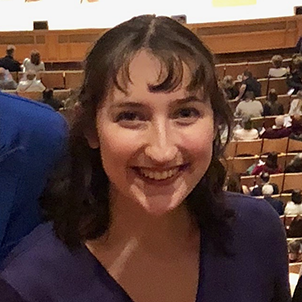Magnetic Origins of Cool Plasma in the Sun’s Corona
(Or, Rainy Days on the Sun)
Emily Mason
PhD Candidate - Physics Department
The Catholic University of America
Wed, April 3, 2019 - 4:00 PM
Karl Herzfeld Auditorium of Hannan Hall - Rm 108
 Two of the outstanding challenges in Heliophysics are:
Two of the outstanding challenges in Heliophysics are:
1. determining the mechanism responsible for heating the
corona from tens of thousands to millions of Kelvin
2. determining the origin of the slow solar wind (speeds of <400
km/s)
We can constrain the problem effectively by observing the behavior of plasma in areas where the magnetic field lines
frequently alternate between being closed locally and closed to some distant location; these regions are called open/closed
boundaries. We present recent observations from the Solar Dynamics Observatory Atmospheric Imaging Assembly of coronal rain in domed structures that frequently result from decayed active regions. Coronal rain is the intriguing phenomenon in which plasma undergoes rapid cooling -- from roughly 10^6 to 10^3 K -- condenses, and falls to the surface. Our measurements of coronal rain dynamics place important constraints on the properties of coronal heating, and are excellent candidates to study slow wind formation.
We will present models for how these condensations form via two different mechanisms and make predictions as to the signatures that new and upcoming solar missions will be able to detect.
Refreshments served at 3:45 PM
If you have any questions about the Colloquium Series or would like to make a donation please contact Adrienne Black, black@cua.edu or (202) 319-5315.
